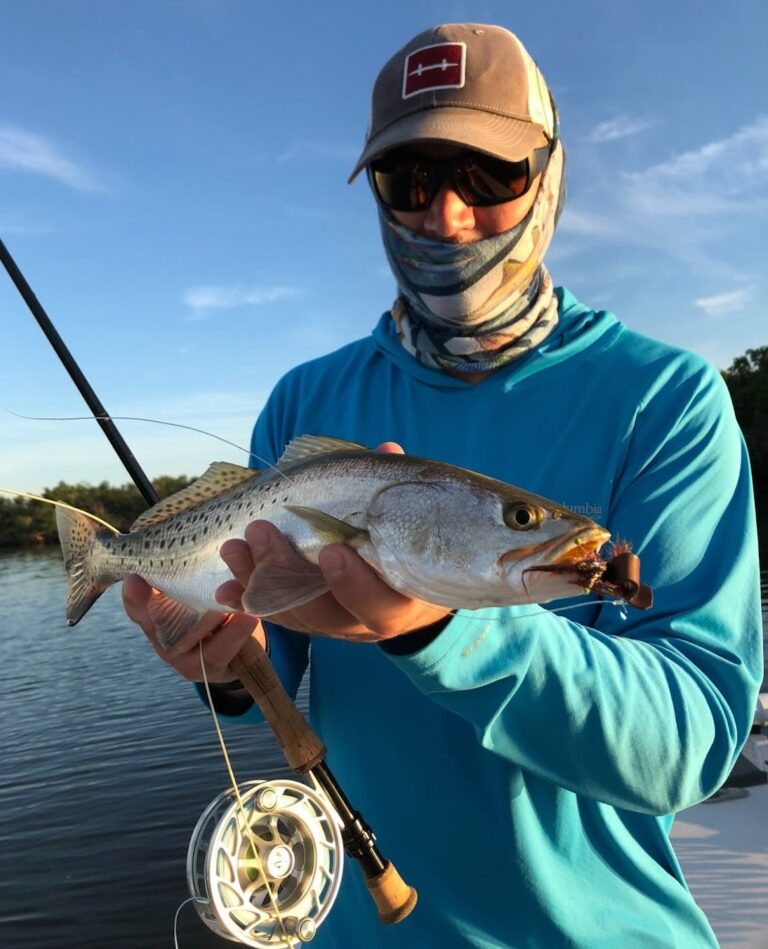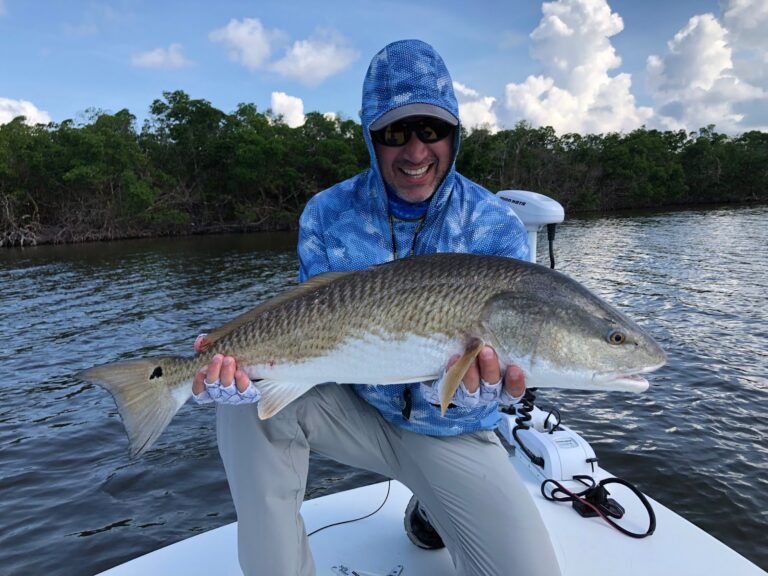Deep-Sea Fishing: The Ultimate Ocean Adventure
Deep-sea fishing, also known as offshore fishing, is an exhilarating activity that takes anglers far from the shore into the deep waters of the ocean.
This type of fishing offers the opportunity to catch a wide variety of large and powerful fish species, making it a thrilling experience for novices and seasoned anglers alike.
The best part is that deep-sea fishing is accessible to everyone—you don’t need to own a boat or have specialized equipment.
From drift boats to charter boats, there are numerous options to get you started on your deep-sea fishing adventure.
The Thrill of Deep-Sea Fishing
Why Deep-Sea Fishing?
Deep-sea fishing offers a unique and challenging experience that differs significantly from freshwater or inshore fishing.
The open ocean is home to a diverse array of fish species, many of which are larger and more powerful than those found in coastal waters.
The thrill of battling a massive fish, the beauty of the open ocean, and the chance to catch something truly extraordinary are just a few reasons why deep-sea fishing is so popular.
Types of Fish You Can Catch
One of the biggest attractions of deep-sea fishing is the variety of fish you can catch.
Here are some of the most popular species targeted by deep-sea anglers:
- Marlin: Known for their size and strength, marlin are one of the most sought-after game fish. Blue marlin and white marlin are the most common species.
- Tuna: Yellowfin, bluefin, and albacore tuna are prized for their fighting ability and delicious meat.
- Swordfish: These nocturnal hunters are known for their long, flat bills and are a challenge to catch.
- Sailfish: Recognizable by their long dorsal fins, sailfish are incredibly fast and provide an exciting fight.
- Mahi-Mahi (Dolphin Fish): These colorful fish are known for their acrobatic jumps and are a favorite among deep-sea anglers.
- Wahoo: Known for their speed and sharp teeth, wahoo are a prized catch for their challenging fight and tasty meat.
- Kingfish (King Mackerel): These fast swimmers are common in warm waters and are known for their aggressive strikes.
- Snapper and Grouper: Found near reefs and wrecks, these bottom-dwelling fish are popular targets for their size and flavor.
- Sharks: Various species of sharks can be caught while deep-sea fishing, offering a thrilling experience for anglers.
Accessibility for Everyone
No Boat? No Problem!
One of the best things about deep-sea fishing is that you don’t need to own a boat to enjoy it.
There are several ways to get out on the open ocean without having to invest in your own vessel.
Charter Boats
Charter boats are a popular option for deep-sea fishing.
These boats are operated by experienced captains and crews who provide everything you need for a successful trip, including gear, bait, and expertise.
Charters can be booked for half-day, full-day, or even multi-day trips, making them a flexible option for anglers of all experience levels.
- Benefits of Charter Boats:
- Guidance: Professional crews provide valuable advice and assistance.
- Equipment: Charters supply all necessary fishing gear and tackle.
- Convenience: Charters handle all the logistics, allowing you to focus on fishing.
Party Boats (Drift Boats)
Party boats, also known as drift boats, are larger vessels that can accommodate multiple anglers at once.
These boats typically operate on a per-person basis, making them an affordable option for individuals or small groups.
Party boats are a great way to experience deep-sea fishing in a more social setting.
- Benefits of Party Boats:
- Cost-Effective: Pay per person rather than renting an entire boat.
- Social Atmosphere: Enjoy fishing with a group of fellow anglers.
- Accessibility: No need for prior experience—crews provide guidance and assistance.
DIY with Rentals
In some coastal areas, you can rent boats for the day and head out on your own deep-sea fishing adventure.
While this option requires more preparation and knowledge, it offers the freedom to fish at your own pace and explore different fishing spots.
- Benefits of DIY Rentals:
- Freedom: Fish where and when you want.
- Customization: Tailor your trip to your specific preferences.
- Cost Control: Manage expenses by bringing your own gear and supplies.
Preparing for Your Deep-Sea Fishing Trip
Essential Gear and Equipment
While charter and party boats provide most of the necessary equipment, it’s still useful to know what gear is typically required for deep-sea fishing:
- Rods and Reels: Heavy-duty rods and reels are essential for handling large, powerful fish.
- Line: High-strength fishing line, often braided, is necessary to withstand the force of big fish.
- Hooks and Lures: A variety of hooks, lures, and bait are used depending on the target species.
- Terminal Tackle: Swivels, leaders, and weights help manage the fishing line and bait presentation.
- Safety Gear: Life jackets, first aid kits, and sun protection are crucial for a safe trip.
What to Bring
Regardless of whether you’re on a charter, party boat, or rental, there are a few items you should bring to ensure a comfortable and enjoyable experience:
- Clothing: Wear lightweight, moisture-wicking clothing and bring a hat, sunglasses, and sunscreen.
- Food and Drink: Pack plenty of water, snacks, and meals to stay hydrated and energized.
- Seasickness Remedies: If you’re prone to seasickness, bring medication or natural remedies.
- Camera: Capture the memories of your deep-sea fishing adventure.

Techniques for Deep-Sea Fishing
Trolling
Trolling involves dragging lures or bait behind a moving boat.
This technique covers a large area and is effective for targeting species like tuna, marlin, and wahoo.
Different lures and baits are used depending on the target species and conditions.
- Tips for Trolling:
- Vary Speed: Adjust the boat’s speed to find the most effective pace.
- Spread Lines: Use outriggers and downriggers to spread lines and cover more water.
- Monitor Depth: Use depth sounders and fish finders to locate fish at different depths.
Bottom Fishing
Bottom fishing targets species that dwell near the ocean floor, such as snapper and grouper.
This technique involves dropping baited hooks to the bottom and waiting for fish to bite.
- Tips for Bottom Fishing:
- Use Heavy Weights: Ensure your bait reaches the bottom and stays there.
- Choose the Right Bait: Live bait, cut bait, and artificial lures can all be effective.
- Anchor or Drift: Depending on conditions, anchoring or drifting can keep you over productive fishing spots.
Jigging
Jigging involves using a weighted lure that is jerked up and down to mimic injured prey.
This technique is effective for a variety of species, including tuna, amberjack, and grouper.
- Tips for Jigging:
- Vary the Motion: Experiment with different jigging speeds and rhythms.
- Use the Right Gear: Specialized jigging rods and reels provide better control and sensitivity.
- Focus on Structure: Fish are often found near underwater structures like reefs and wrecks.
Live Bait Fishing
Using live bait is a highly effective technique for deep-sea fishing.
Live bait such as mackerel, squid, or sardines can attract a wide range of predatory fish.
- Tips for Live Bait Fishing:
- Keep Bait Alive: Use aerated live wells or bait tanks to keep bait fresh and active.
- Hook Placement: Hook the bait in a way that allows it to swim naturally.
- Match the Hatch: Use bait that mimics the natural prey of the target species.
Understanding the Ocean Environment
Reading the Water
Successful deep-sea fishing often involves understanding the ocean environment and reading the water.
Factors such as water temperature, currents, and the presence of baitfish can all influence where fish are found.
- Temperature: Many species are attracted to specific temperature ranges. Use temperature gauges and thermometers to find productive waters.
- Currents: Currents can concentrate baitfish and create feeding opportunities for predators. Look for areas where currents converge or change direction.
- Bird Activity: Seabirds feeding on baitfish often indicate the presence of larger predatory fish below.
Safety Considerations
Safety is paramount when deep-sea fishing.
Here are some key safety considerations to keep in mind:
- Weather: Always check the weather forecast before heading out. Avoid going out in rough or dangerous conditions.
- Communication: Ensure you have reliable communication equipment, such as VHF radios, to stay in contact with other boats and emergency services.
- Safety Equipment: Have life jackets, first aid kits, flares, and other safety gear readily available.
Conservation and Responsible Fishing
As with all types of fishing, it’s important to practice conservation and responsible fishing when deep-sea fishing.
Many species targeted in deep-sea fishing are vulnerable to overfishing, and it’s crucial to follow regulations and best practices to protect ocean ecosystems.
Catch and Release
Practicing catch and release helps ensure the sustainability of fish populations.
Use appropriate gear and techniques to minimize harm to fish that are released.
- Use Circle Hooks: These hooks are less likely to cause serious injury to fish.
- Handle Fish Carefully: Wet your hands before handling fish and avoid touching their gills or eyes.
- Release Quickly: Minimize the time fish spend out of the water to increase their chances of survival.
Follow Regulations
Adhere to local fishing regulations, including size and bag limits, to protect fish populations.
Be aware of protected species and avoid targeting them.
Wrapping Up: Your Gulf Coast Deep-Sea Adventure Awaits
Alright folks, let’s reel it in and recap what we’ve learned about deep-sea fishing in our Gulf waters.
From the shimmering shores of Fort Myers to the pristine coast of Naples, Southwest Florida offers some of the best deep-sea angling you’ll find this side of paradise.
You might dream about being after the hard-fighting amberjack, an elusive red snapper, or a mighty goliath grouper, and the Gulf’s got something for every level of angler.
Also, you don’t need to own a yacht to get out there – plenty of charters and party boats are ready to get you on the fish.
Just be sure to check the local regulations, as our waters are carefully managed to keep the fishing good for years to come.
Don’t forget the essentials: a good hat, plenty of water (our Florida sun is no joke), and maybe some motion sickness remedies if you’re new to those rolling waves.
Most charters provide the gear, but it never hurts to ask what you might need to bring along.
Lastly, keep in mind that our Gulf isn’t just a fishing spot – it’s a treasure trove of marine life.
Practice responsible fishing, and you’ll be doing your part to keep our waters teeming with life for the next generation of anglers.
What are you waiting for? The Gulf is calling, and trust me, there’s nothing quite like the thrill of a bent rod and the sound of a screaming reel under that big Florida sky.



